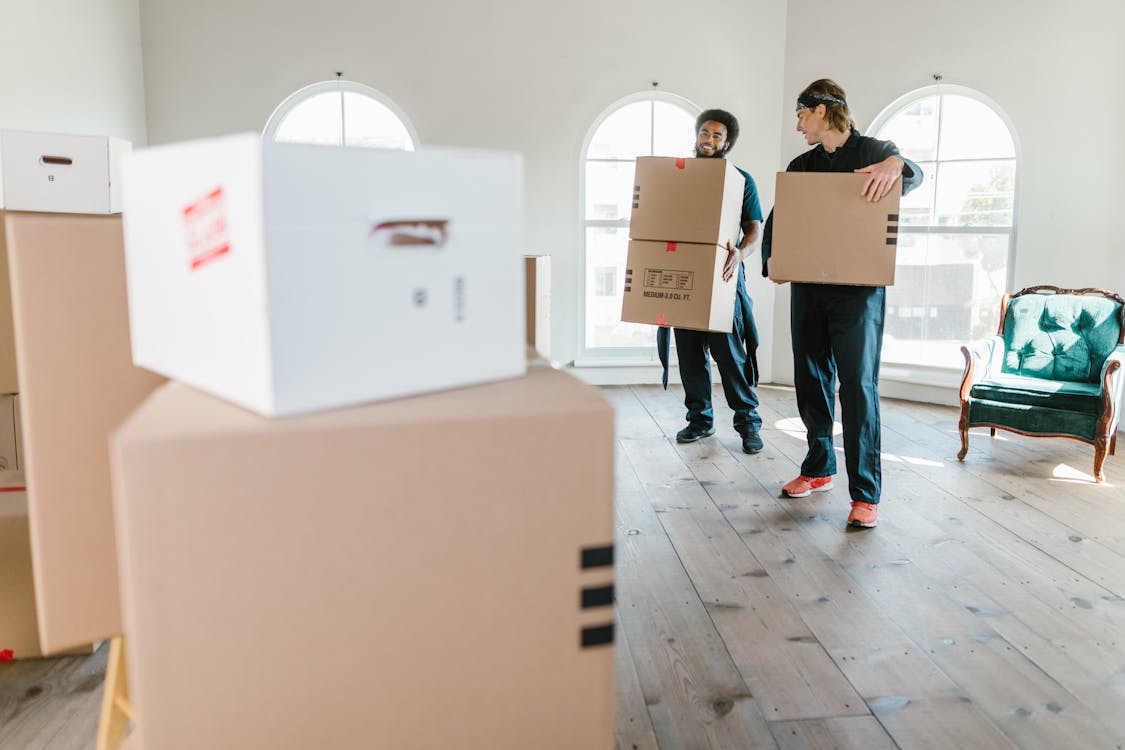
There’s no doubt about it, the way that we work has forever been altered by the COVID-19 pandemic. The previously traditional workspaces that we had all taken for granted must now be adapted to accommodate this new paradigm, as seen through the introduction of social distancing requirements and brand new working schedules. Just as we dared to dream that the end was in sight and normality could return, the Omicron variant and others like it have once again thrust the world into disarray, forcing us to question whether or not things will ever be the same again.
The repeated uncertainty associated with the pandemic has created dramatic moments in the commercial property sector, as businesses struggle to ascertain best practices that can allow employees to remain safe and happy whilst also maintaining productivity. Some businesses have opted for a hybrid working model, offering employees greater flexibility over when, how and where they work. Many employees, when provided the option, have opted for remote working schedules, something which has allowed certain businesses to downsize or sublease their office spaces in a bid to reduce overhead costs. Some organisations that can’t offer remote working, whether that be due to the nature of their businesses or their unique industry, are now looking for larger spaces to adhere to guidelines and safeguard employees.
Whatever the reason for your move to a new office location, if you’re preparing to relocate to a serviced office or coworking facility, an organised and planned approach will minimise disruptions. Here are a few things to consider when moving to a new office space…
Step 1: Plan
Identify your needs: When choosing a new space in these times, you need to consider more than just business needs, costs, technology requirements and growth plans. You also need to consider social distancing best practices, office provider vaccination policies, and the flexibility of lease agreements. Depending on your location, future large-scale outbreaks could result in mandated lockdowns, something which would necessitate the availability of virtual services to mitigate business disruptions.
Establish a planning team: A planning team will ensure all aspects of the move are kept on track. This includes obtaining quotes and overseeing logistics. When tasking your planning team, make sure they adhere to current COVID-19 requirements and are well aware of any expected future developments.
Prepare a plan: Alongside the creation of a planning team, it’s also essential for business owners to have their own all encompassing plan. Part of this plan is ensuring that the office movie doesn’t exceed budget constraints. When developing your plan and budget, consider contingencies for unexpected pandemic related costs and delays (e.g. having to place things in storage, should a snap lockdown occur).

Step 2: Communicate
Inform your employees: Workers should be made aware of why the move is happening and when it will take place. Explaining the reasons for the move and the benefits that it will provide to the business will help to reassure your team. As part of this communication, let employees know what steps will be taken to promote health and safety, both during the move and when established in the new space. Finally, let everyone know their own responsibilities when preparing for, and moving into the new serviced office or flexible office space, these often include cleaning workstations and taking home essential work materials.
Inform external stakeholders: Once a moving date is confirmed, inform external clients, suppliers, service providers, government agencies, your current landlord or property manager, and other stakeholders. Create a list of contacts to ensure no one is missed, this list will often help to remind you to contact groups that are often forgotten in the heat of the move – such as internet providers and insurance agencies.
Choose a moving company: Once you secure an office space and set a date, choosing a moving company is the next vital step. You will have to reserve the moving date and explicitly communicate your requirements, so the removalists allocate enough time, personnel and transportation. When picking movers, consider their health and safety practices, including measures against COVID-19, as well as their track record of smooth and reliable moves for other businesses. Don’t settle for your first quote, contact multiple moving companies in order to acquire the best deal.

Step 3: Prepare
Create an inventory: Identify the furniture and equipment in your office space that needs to move. Next, think about what new items you may need. Place orders early to ensure you have everything in place at the new location. Depending on where you’re moving, you might even be able to offload unneeded furniture or equipment. This is particularly common for businesses opting to move to a serviced office space that comes inclusive of office furniture and state-of-the-art equipment.
Develop floor plans: Assign a colour for each section or space in the current and new office. Using colour-coded stickers ensures furniture, equipment and other items are placed in the correct spot during the move. Similarly, employees or specific rooms (for example, a boardroom) should be assigned a number. Give movers a detailed floor plan of both the old and new workspaces alongside the assigned colours and numbers to keep them organised.
Prepare a moving day package: Give employees an information pack detailing the moving day plan, so that everyone knows what to expect. Include instructions, directions and a list of responsibilities. Also notify them of their assigned number and/or colour code for parking spaces, office numbers etc to avoid any confusion of where to go. It’s also extremely important to detail any COVID-19 related requirements for the day, such as whether or not the presentation of a vaccine passport is required on entry at the new workspace.
Create a contact list: Establish a list of emergency contacts for the team, plus other relevant parties (for example, property management). This list should identify who will stay at the current property until the last person or item leaves to be moved to the new space.
Assign a moving coordinator: This person will be the lead for moving day, and should arrive early to meet with both the movers and internal moving team. The coordinator should have a copy of the emergency contact list. They should also contact everyone involved in the logistics prior to moving day to clarify all details and confirm times, vehicles and people.
Other aspects to consider during the planning phase of the moving process include the booking of storage facilities to keep items that might not be moved right away, arrangement of cleaning services, activation of new phone lines, and the distribution of access codes or keys for the new commercial property.

Step 4: Move
Supervise the move: The moving coordinator should oversee the move and work with their team to ensure the moving company is on track and that every item is transported carefully. The team should also ensure that any COVID-19 requirements are being followed, making sure that hand sanitiser and spare face masks are readily available at both office locations.
Set up essential services: Prioritise IT and communications early. Ensure that service providers know the moving date so that telephone lines, internet and other systems are operational from Day 1. Air conditioning or heating should also be operational.
Set up essential amenities: The moving coordinator should ensure that hand sanitiser stations, hand soap and other protective equipment are available throughout the new space. The kitchen should also be stocked with additional sanitiser, soap, paper towels and essentials like cutlery, plates, tea, coffee, cups, and drinking water. Include a new internal contact list at each workstation. Finally, make sure the moving team are looked after. Set a budget for snacks and refreshments for movers and team members involved with the move.
Confirm relocated items: Check that all items on the inventory have been received. Ensure bulky items are in the right locations. Cross-checking the assigned colours and numbers will help with this.
Check for damage: Check the office space to see if any damages have occurred during the move, such as holes in walls, scuffs on wooden floors and fresh stains on carpets. Also, check that all equipment and furniture is in the same condition it was before the move. Any and all issues should be immediately brought to the attention of the moving company and a written record of the incident should be noted.

Step 5: Get settled
Check the paperwork: Confirm that your insurance has been transferred to the new property and check that the old lease is finalised. Also, check that payments for the move were made and deposits were returned.
Celebrate the move: Issue a media release, update your website and post information on social media about your office relocation, including the change of address and new contact details. Provide a welcome pack to each employee with a small gift, you could also look to organise a welcome party to acquaint employees with the new workspace and also, if beneficial to you business, allow for networking opportunities with other onsite businesses.
Conduct frequent risk assessments: Once established in your new workspace, the final step in your office move checklist should involve the undertaking of frequent risk assessments to keep team members safe during the continued uncertainty of the pandemic. As outlined by the HSE, risk assessments should reflect the current public health regulations and guidelines in order to control risks and reduce exposure for workers.


